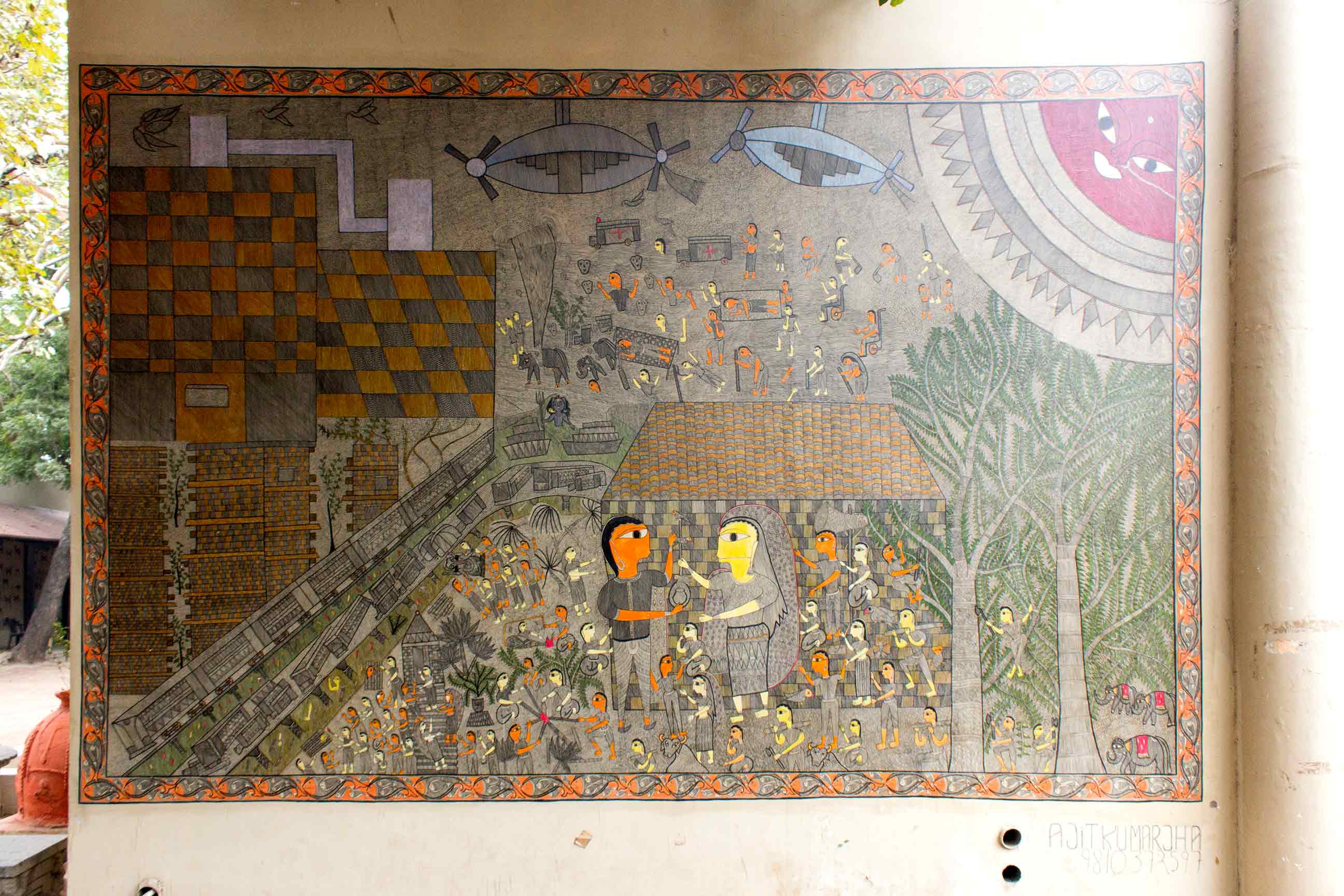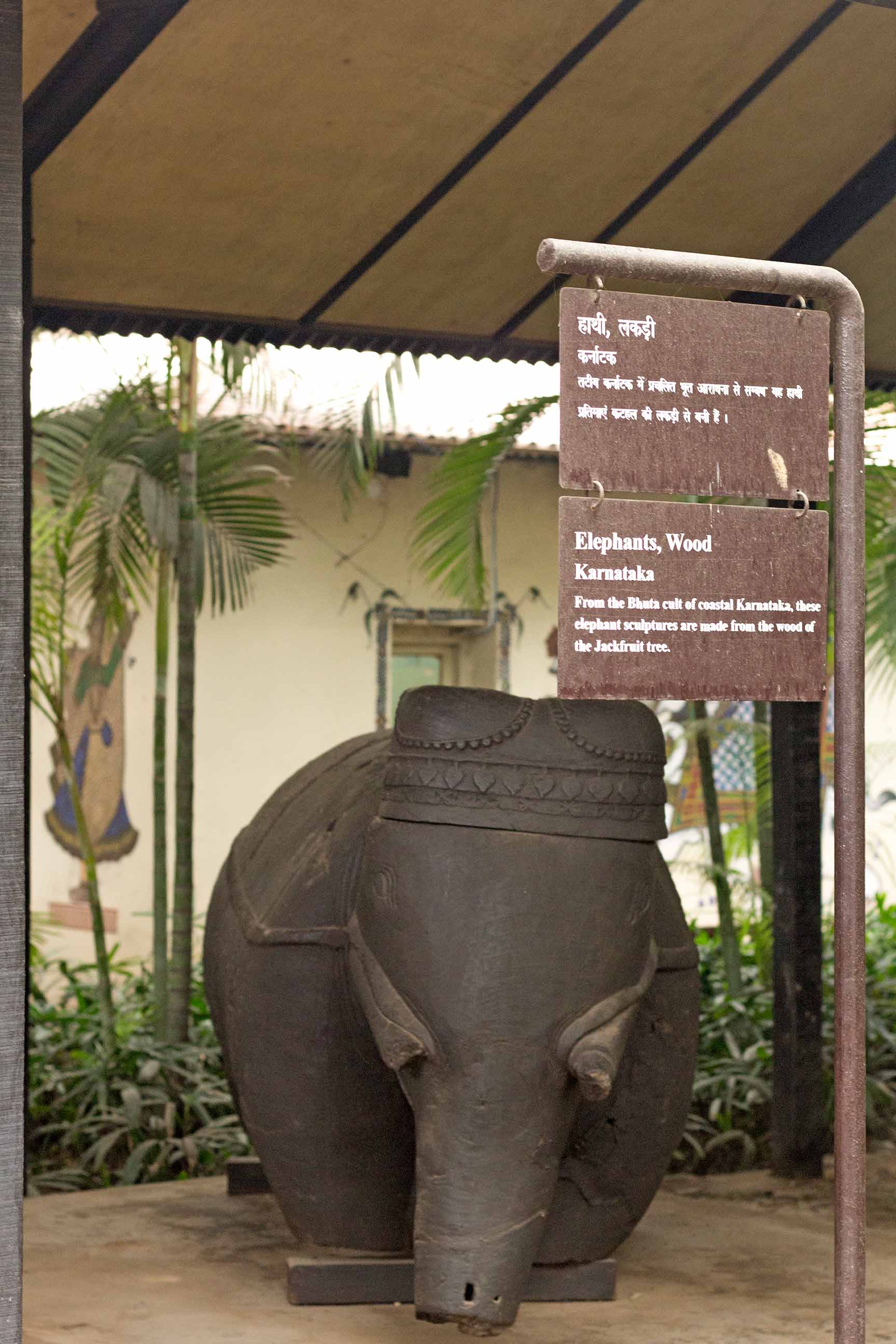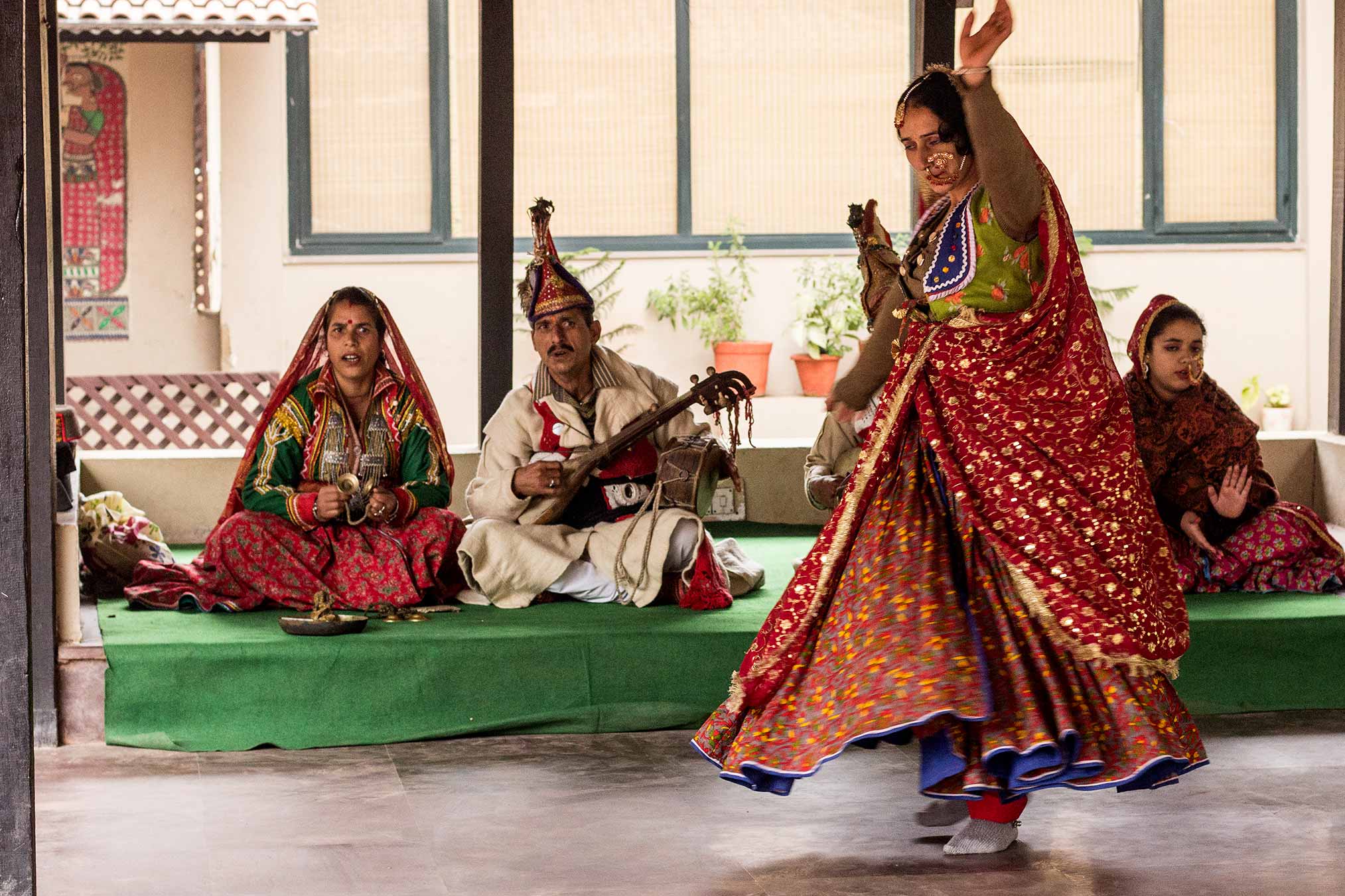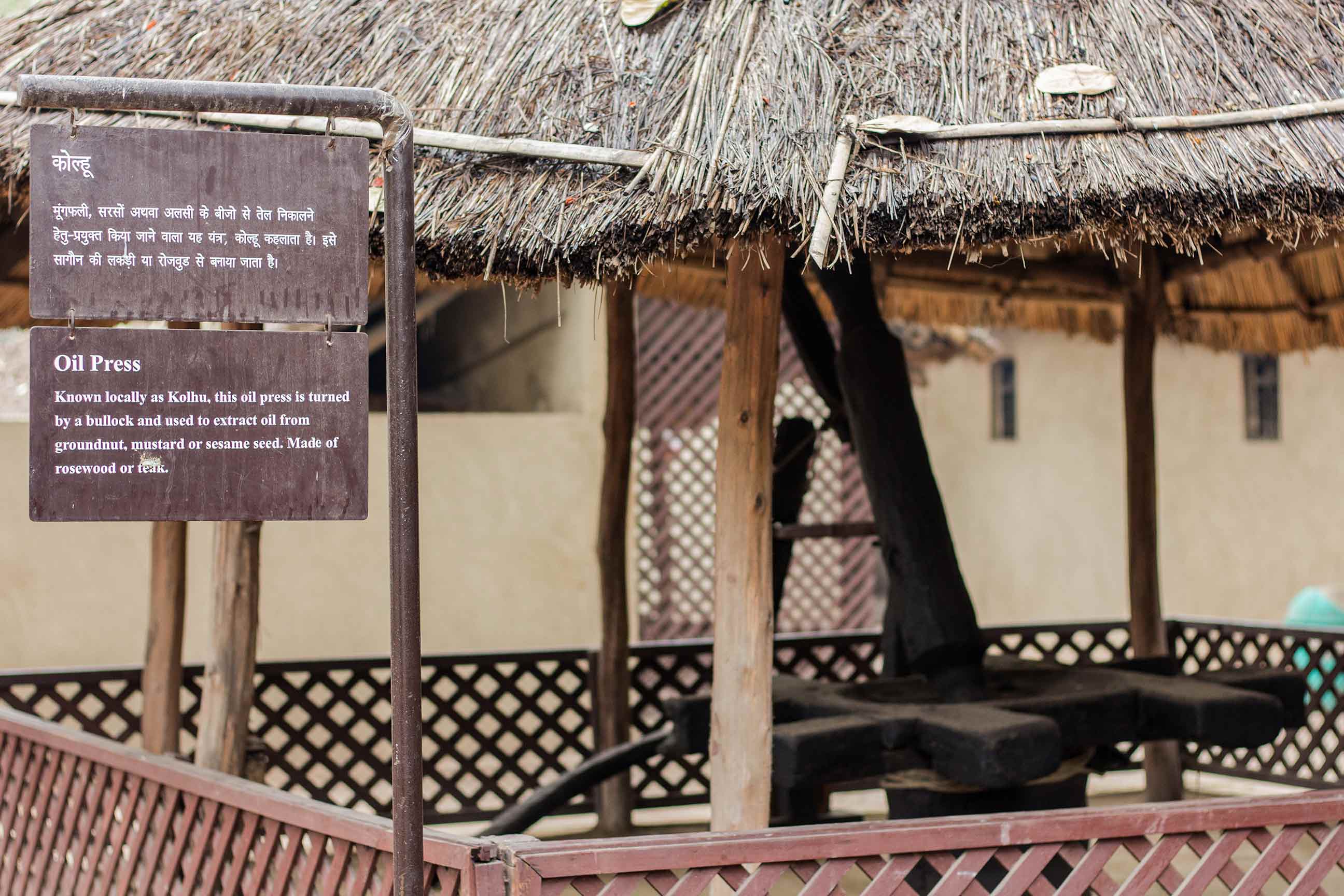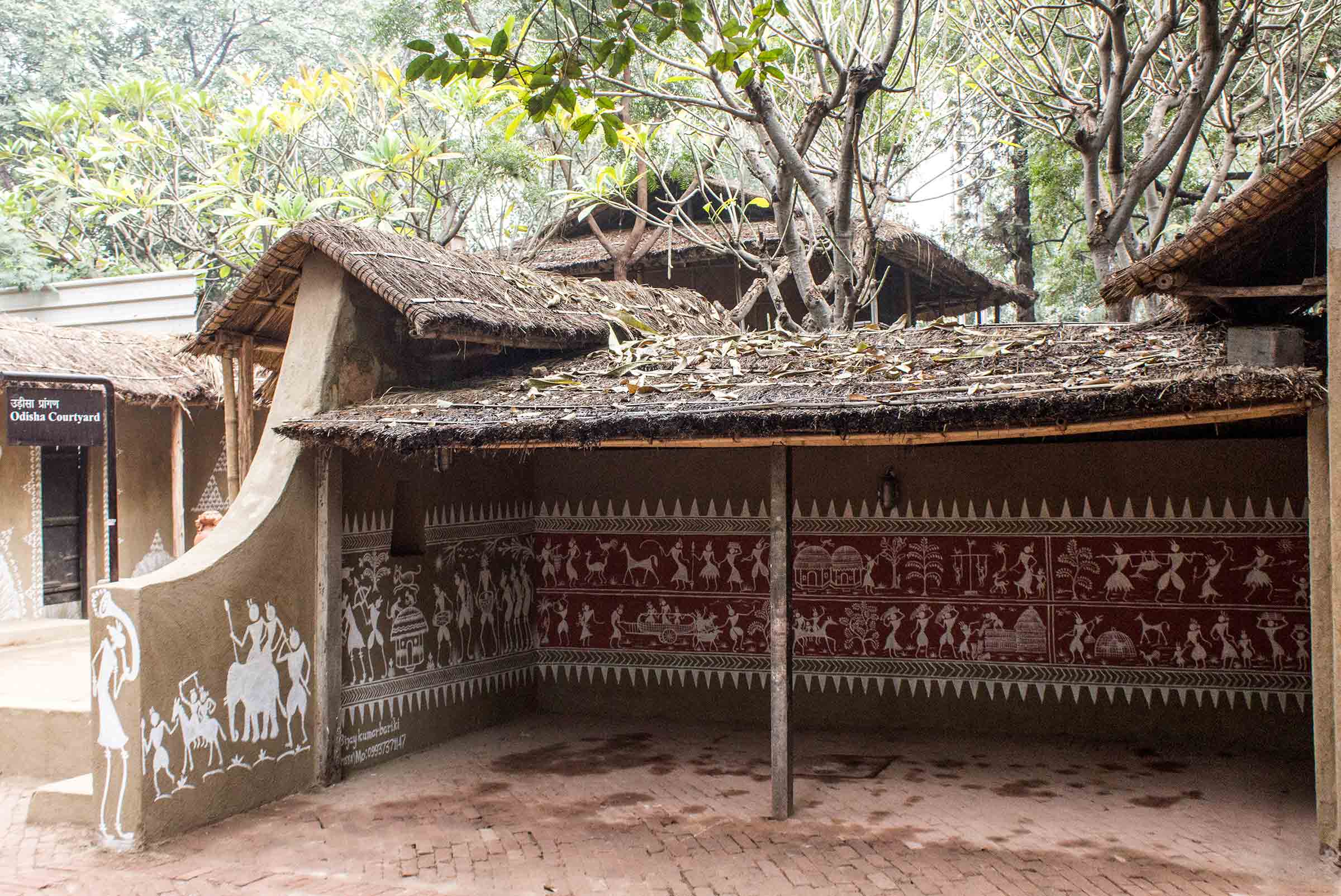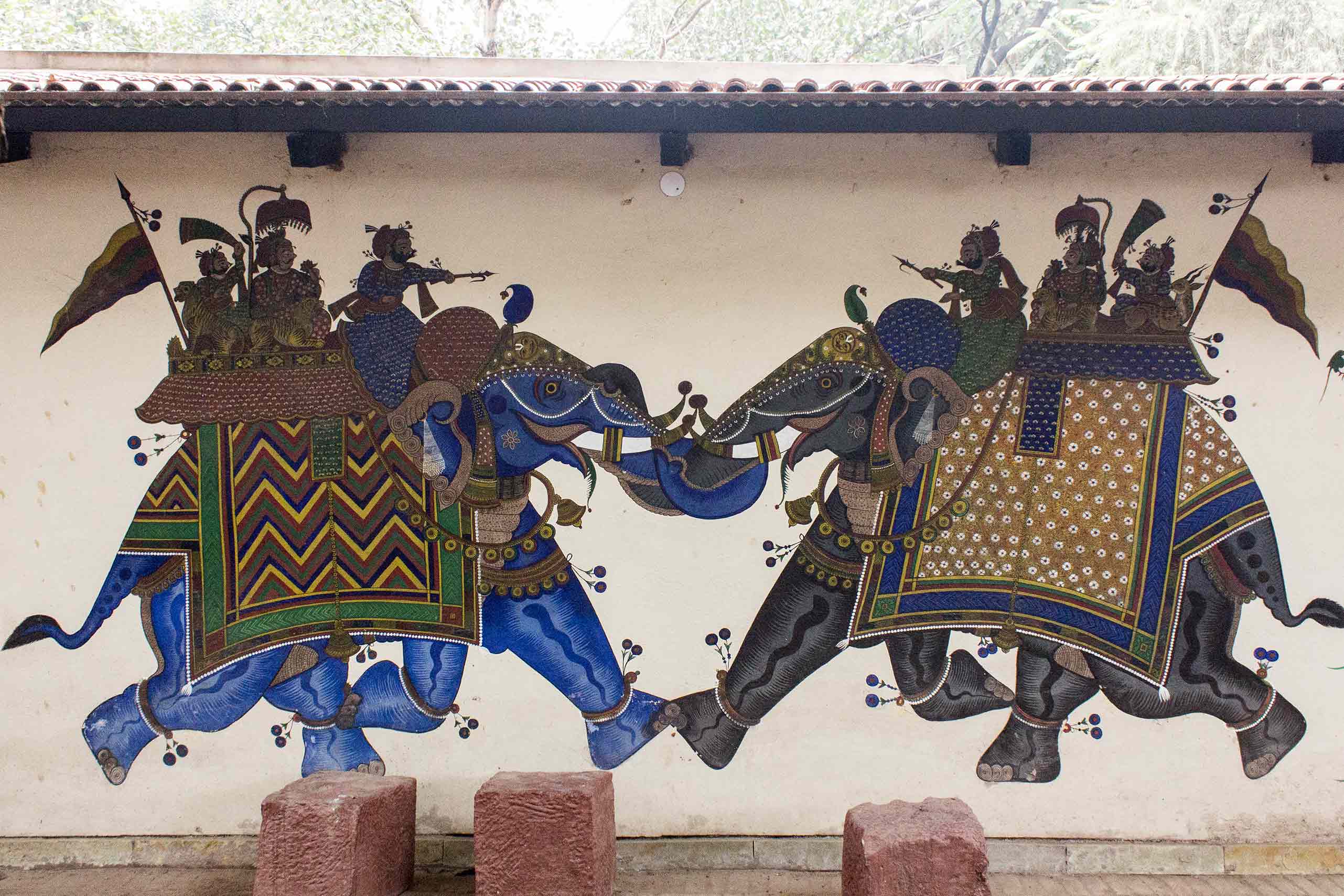National Handicrafts and Handlooms Museum was set up over a period of 30 years starting in the 1950s and 60s by the efforts of the renowned freedom fighter Late Kamaladevi Chattopadhyay. This was when the area was envisaged as an ethnographic space where craftsmen from various parts of India would come in to work towards the preservation of various traditional arts and crafts.
Today the museum holds over 35,000 rare and distinctive pieces reflecting the continuing traditions of Indian craftsmen through paintings, embroidery, textiles, and various crafts of clay, stone and wood, all housed in a building designed between 1975 and 1990 by the architect Charles Correa.
The various galleries within the museum include the Tribal and Rural Craft Gallery, Gallery of Courtly Crafts, Textile Gallery, Gallery of Popular Culture etc. The museum also houses a village complex spread over 5-acres, with 15 structures representing village dwellings, courtyards and shrines from different states of India, with items of day-to-day life displayed. The entire village complex is a remnant of a temporary exhibition on the theme of rural India, held in 1972.
The highlights at this museum are occasional performances of folk art and dance, a village complex, 250-300-year-old Bhoota collection from Karnataka, rare Kashmiri 300-year-old dushalas, and handkerchiefs from Chamba known for their unique embroidery.
Crafts Demonstration: 10 am to 6pm
Lota Shop: 9:30 am - 5:30 pm
Café Lota: 10:00 am - 7:00 pm
28.6135288, 77.242466
